Homeowners insurance might feel like that mysterious friend who shows up uninvited to your housewarming party: you know they’re important but aren’t quite sure how they fit in. Understanding how it’s paid can be just as puzzling. Is it a monthly subscription like your favorite streaming service or a one-time payment like a wedding gift? Spoiler alert: it’s a bit of both, and navigating the ins and outs can save homeowners from unexpected surprises.
From annual premiums to escrow accounts, the world of homeowners insurance payments is filled with twists and turns. With a dash of humor and a sprinkle of knowledge, this guide will break down the process, ensuring that homeowners feel confident and informed. After all, who wouldn’t want to tackle insurance payments without breaking a sweat—or the bank?
Table of Contents
ToggleUnderstanding Homeowners Insurance
Homeowners insurance protects property owners from various risks and unexpected costs. It combines multiple coverages that address those risks, making it vital for every homeowner.
What Is Homeowners Insurance?
Homeowners insurance offers financial protection for home structures and personal belongings. It covers damages from instances like fire, theft, and natural disasters. Policies typically include liability coverage, which protects against injuries on the property. Homeowners can customize coverage levels based on their unique needs. Annual premiums depend on factors such as home value and location. Understanding specific policy terms enhances financial readiness for potential claims.
Types of Coverage
Homeowners insurance includes several types of coverage, each serving distinct purposes. Dwelling coverage protects the home’s structure, while personal property coverage safeguards belongings inside. Liability coverage handles legal expenses if someone is injured on the property. Additional living expenses coverage helps with costs associated with temporary housing after a covered loss. Homeowners can opt for specialized coverage options, like flood or earthquake insurance, to address extra risks. Knowing these types ensures homeowners select appropriate levels of protection.
Payment Structure of Homeowners Insurance

Homeowners insurance typically involves consistent payments, either monthly or annually. Understanding how these payments function aids in effective budget management.
Premiums Explained
Premiums represent the cost of homeowners insurance. They vary based on coverage levels, location, and property features. Most homeowners pay premiums annually, with some choosing monthly installments. Insurers often calculate premiums using risk assessments that factor in the home’s value, claims history, and neighborhood crime rates. Premiums can also fluctuate due to changes in policy terms or market conditions. Regular review of these costs helps homeowners stay informed and prepared for any adjustments.
Deductibles and Their Role
Deductibles play a crucial role in homeowners insurance payments. They represent the amount a homeowner must pay out-of-pocket before the insurer covers a claim. Typically, higher deductibles lead to lower premiums and vice versa. Policyholders select deductibles when purchasing their insurance and can adjust them based on their financial readiness. Understanding the interplay between deductibles and premiums ensures homeowners make well-informed decisions. A well-chosen deductible level can reduce overall expenses and provide effective coverage, depending on individual needs and situations.
Payment Methods for Homeowners Insurance
Homeowners insurance payments can occur through different methods, enabling flexibility for policyholders. Understanding these options helps in choosing the best approach for managing expenses.
Monthly vs. Annual Payments
Monthly payments provide a manageable way for homeowners to budget their insurance costs. Many prefer this method, as it spreads out the premium over twelve installments, reducing immediate financial burden. Annual payments usually attract discounts, leading to lower overall costs in some instances. Some homeowners opt for this method for the simplicity of making a single payment. Evaluating personal finances can determine the best choice for payment frequency.
Online Payment Options
Online payment options streamline the process for homeowners. Paying insurance premiums online is convenient, allowing payments anytime and anywhere with internet access. Many insurance companies offer secure portals for policyholders to manage their accounts effectively. Features like auto-pay enhance ease, ensuring timely payments and preventing lapses in coverage. Additionally, some insurers provide discounts or incentives for opting for electronic payments, contributing to savings over time.
Factors Affecting Payment
Various factors influence homeowners insurance payments. Understanding these factors helps homeowners make informed decisions about their policies.
Location and Risk Assessment
Location significantly impacts insurance premiums. Homes in regions prone to natural disasters like floods or earthquakes typically incur higher rates. Insurers conduct risk assessments based on crime rates, historical claims data, and environmental hazards. For instance, urban areas may experience different costs than rural settings due to disaster susceptibility. Additionally, certain building materials can lead to varying premiums; fire-resistant materials may lower risk assessments. Overall, geographic considerations strongly dictate payment amounts.
Policy Limits and Coverage Types
Policy limits play a crucial role in determining premiums. Higher limits often lead to increased payments since they provide broader coverage. Homeowners need to evaluate their coverage types, including dwelling, personal property, and liability. Each coverage type affects overall costs, as more extensive protection results in higher premiums. Adjusting coverage levels can help manage payments effectively. Homeowners can also opt for add-ons like flood insurance, which further impacts total costs. Ultimately, selecting the right combination of limits and coverage types is vital for financial planning.
Understanding how homeowners insurance is paid is crucial for effective financial management. By knowing the options available for payment frequency and the factors that influence premiums, homeowners can make informed decisions that align with their budgets.
Regularly reviewing coverage levels and premiums ensures adequate protection while minimizing unexpected costs. With the convenience of online payment methods and the potential for discounts, managing homeowners insurance becomes a more straightforward task.
Ultimately, being proactive about homeowners insurance payments not only safeguards personal assets but also contributes to peace of mind in homeownership.


